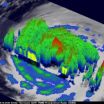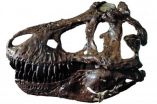(Press-News.org) Catalan researchers have studied the factors relating to urban transport service provision in 45 European cities, including Barcelona, Bilbao and Madrid. The study, published in the latest issue of Transportation research part E-logistics and transportation review, concludes that Central European cities have the best urban transport service provision in Europe. Capital cities are at the head of the league, both in terms of supply and demand.
"The geographic variables we studied show that Mediterranean countries have the least developed (offer the poorest range) in terms of urban transport systems, even though our demand for transport is not significantly lower than in the central countries", Daniel Albalate, who co-authored the study with Germà Bel, tells SINC. Both researchers work at the University of Barcelona (UB).
The study, published in the latest issue of the journal Transportation research part E-logistics and transportation review, analyses the socioeconomic features and institutional and regional urban transport factors of 45 European cities with very different characteristics.
"The countries of Central Europe have greater provision of urban transport in relation to population size than the Mediterranean and Nordic ones", explains Albalate. The so-called Eastern countries (which are also Central European) have better urban transport provision than Germany, Holland and France. "We have interpreted this result as a reflection of their Soviet legacy, with greater State intervention in the economy, and also in transport", the expert adds.
The 'public choice' theory
The results also throw light on other issues. "The cities that operate their own public transport tend to provide a range in excess of market requirements. However, cities with private incentives within their urban transport system tend to cut back on this over-provision", the researcher says.
"This would be confirmed by public choice theory, which anticipates that privatisation and competition for contracts should create fewer incentives to over-provide services. This is positive, but only if it doesn't lead to a reduction in quality or accessibility in certain areas. We found it does not affect demand, which leads us to believe that the privatisation of transport does not affect the quality of the service", Albalate adds.
Meanwhile, the study also confirms something that may seem obvious – the capital cities of European countries have the largest transport systems. "We were interested to see whether the state capitals had more provision but less demand, to see if they were receiving any favourable treatment. What we found is that there is both greater supply and demand in the capitals, so there is in fact a balance".
INFORMATION:
The study was carried out using the Mobility in Cities (MCD) database of the International Association of Public Transport (UITP www.uitp.org), which contains data from 52 cities worldwide. A sample of 42 European cities was chosen from these in order to produce a joint and standardised estimate for all the cities.
References:
Daniel Albalate y Germa Bel. "What shapes local public transportation in Europe? Economics, mobility, institutions, and geography", Transportation research part e-logistics and transportation review 46 (5): 775-790, septiembre de 2010. doi:10.1016/j.tre.2009.12.010
Mediterranean countries offer fewer urban transport options than Central European ones
2010-09-16
ELSE PRESS RELEASES FROM THIS DATE:
Intensive care diaries protect patients from PTSD
2010-09-16
Some intensive care patients develop post-traumatic stress syndrome (PTSD) after the trauma of a difficult hospital stay, and this is thought to be exacerbated by delusional or fragmentary memories of their time in the intensive care unit. Now researchers writing in BioMed Central's open access journal Critical Care have found that if staff and close relatives make a diary for patients, featuring information about their stay and accompanied by photographs, PTSD rates can be significantly reduced.
Professor Richard Griffiths and Christina Jones from the University of Liverpool, ...
Why the craving for cocaine won't go away
2010-09-16
People who have used cocaine run a great risk of becoming addicted, even after long drug-free periods. Now researchers at Linköping University and their colleagues can point to a specific molecule in the brain as a possible target for treatment to prevent relapses.
Drugs are addictive because they "hijack" the brain's reward system, which is actually intended to make it pleasurable to eat and have sex, behaviors that are necessary for survival and reproduction.
This "hijacking" is extremely long-lived and often leads to relapses into abuse, especially when the individual ...
Technology to screen for synbio abuses lags
2010-09-16
London, UK (September 16, 2010) – Amid growing concern that synthetic life sciences pose biosecurity and biosafety risks, scrutiny is increasing into the burgeoning DNA sequence trade. Research published today in the Bulletin of the Atomic Scientists, published by SAGE, looks at the necessity of a global regulator for DNA trade, and the significant barriers to creating one.
Synthetic life sciences are making breakthroughs at a breakneck pace, and could offer technological fixes for our future ecological, technological, and biomedical challenges. But these benefits also ...
The biggest crash on Earth
2010-09-16
During the collision of India with the Eurasian continent, the Indian plate is pushed about 500 kilometers under Tibet, reaching a depth of 250 kilometers. The result of this largest collision in the world is the world's highest mountain range, but the tsunami in the Indian Ocean from 2004 was also created by earthquakes generated by this collision. The clash of the two continents is very complex, the Indian plate, for example, is compressed where it collides with the very rigid plate of the Tarim Basin at the north-western edge of Tibet. On the eastern edge of Tibet, the ...
Goddess of fortune found in Sussita
2010-09-16
A wall painting (fresco) of Tyche, the Greek goddess of fortune, was exposed during the 11th season of excavation at the Sussita site, on the east shore of the Sea of Galilee, which was conducted by researchers of the University of Haifa. Another female figure was found during this season, of a maenad, one of the companions of the wine god Dionysus.
"It is interesting to see that although the private residence in which two goddesses were found was in existence during the Byzantine period, when Christianity negated and eradicated idolatrous cults, one can still find clear ...
Cardiac imaging breakthrough developed at the University of Western Ontario
2010-09-16
VIDEO:
New imaging technique developed by cardiologist, Dr. James A. White and colleagues at The University of Western Ontario shows 3-D image of the heart vasculature and myocardial scar tissue.
Click here for more information.
Cardiologists and surgeons may soon have a new tool to improve outcomes for patients requiring pacemakers, bypass surgery or angioplasties. Research led by Dr. James White and his colleagues at The University of Western Ontario has led to a new imaging ...
Discovery of key pathway interaction may lead to therapies that aid brain growth and repair
2010-09-16
WASHINGTON, DC—Researchers at the Center for Neuroscience Research at Children's National Medical Center have discovered that the two major types of signaling pathways activated during brain cell development—the epidermal growth factor receptor pathway and the Notch pathway—operate together to determine how many and which types of brain cells are created during growth and repair in developing and adult brains. This knowledge may help scientists design new ways to induce the brain to repair itself when these signals are interrupted, and indicate a need for further research ...
NASA's 3-D look into Hurricane Igor's heavy rainfall
2010-09-16
NASA's Tropical Rainfall Measuring Mission (TRMM) satellite has provided a 3-D look at the power "under the hood" (of clouds) in powerful Category 4 Hurricane Igor as it heads toward Bermuda. In the meantime, Igor is creating dangerous surf in the eastern Atlantic, and it will affect the U.S. East coast later today. Igor is an extremely dangerous category four hurricane on the Saffir-Simpson hurricane wind scale today, Sept. 16, and he is expected to remain a large and powerful hurricane over the next several days.
The TRMM satellite, operated by NASA and the Japanese ...
Scientific understanding of T. rex revised by a decade of new research and discovery
2010-09-16
We've all heard this story: the Late Cretaceous of Asia and North America—about 65 million years ago—was dominated by several large-headed, bipedal predatory dinosaurs like Tyrannosaurus rex and Tarbosaurus that had tiny arms. But a decade of new fossil discoveries that have more than doubled the number of known tyrannosaur species has changed this tale. Older and smaller tyrannosaurs have made the evolutionary tree of this group richer and more complex. Furthermore, a series of innovative research projects on topics like bone growth and biomechanics have added an enormous ...
Beating blood clots: Reducing your risk before hip replacement surgery
2010-09-16
Risk factors for venous thromboembolism after total hip replacement (THR) surgery were identified in a new study published in the September 2010 issue of The Journal of Bone and Joint Surgery (JBJS). While the rate of thromboembolism has been significantly reduced through medication, understanding the risk factors could further reduce the likelihood of patients developing this potentially fatal complication.
Two of the most common manifestations of a thromboembolism include:
Deep vein thrombosis (DVT), in which the blood clot forms in a deep vein, commonly in the thigh ...



